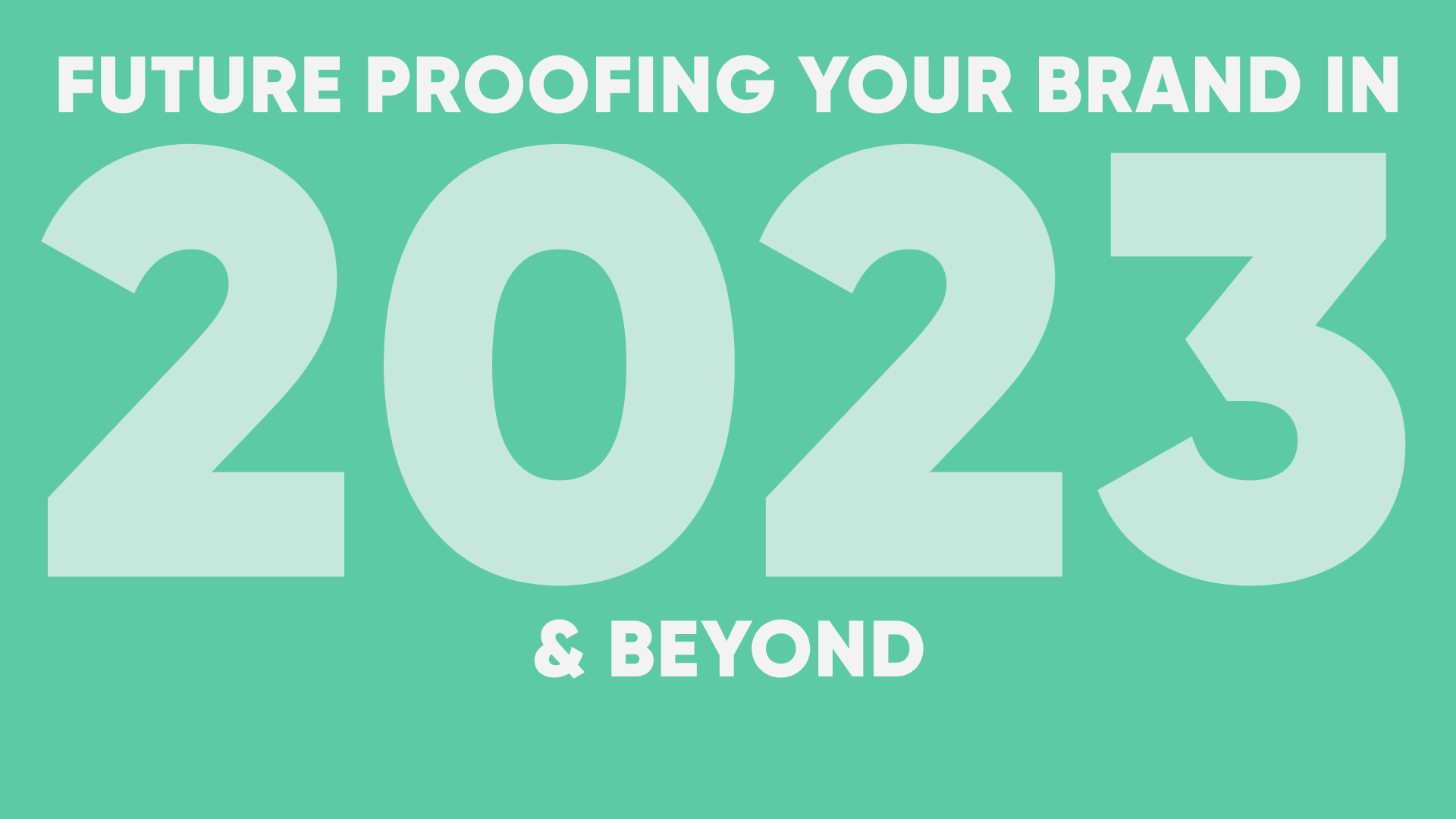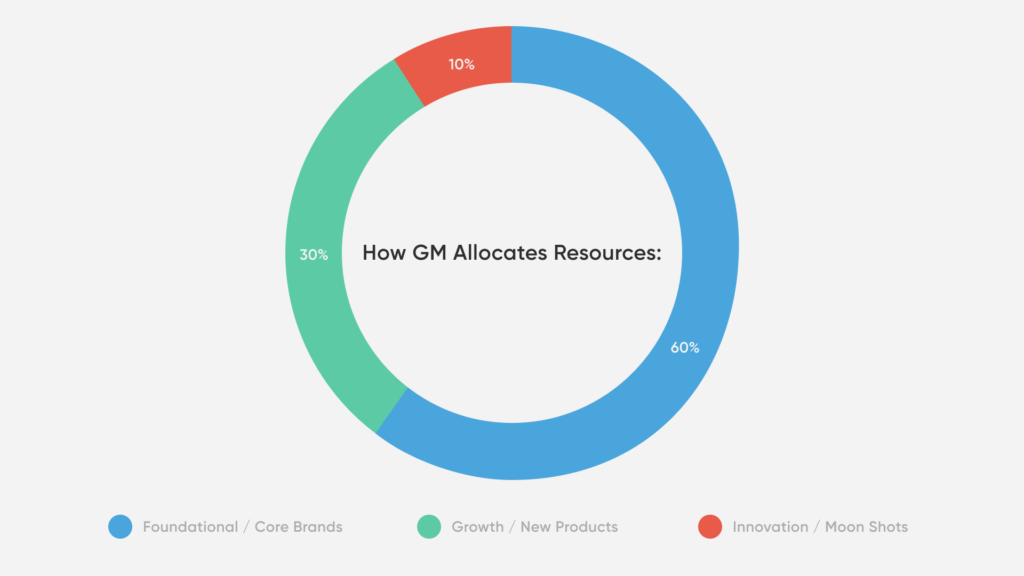Future-Proof Your Brand: 2023 & Beyond

I recently attended Commerce Week hosted by AdWeek in NYC.
During the three day event in Midtown, I was capturing content, connecting with wicked smart people and working with the team at Digital Surgeons to extrapolate over 20 hours of learning into a snackable piece of content for you and whomever you share this article with. 📣
I was fortunate to have my colleague Ash McGrath decipher fifteen pages of notes a mile long slack string into the following article. We co-authored this piece. ✍️
We hope you enjoy the insights and key takeaways we prepared. 🙏
We’re in exciting and uncertain times as brands brace themselves for an impending economic downturn amid increasingly complex challenges exacerbated by a global health crisis, rigid privacy laws, rising inflation, and Web3 influences. What’s exciting about that, you ask? These times of uncertainty also pose incredible opportunities for bold leaders willing to embrace advancements in retailer-technology and human ingenuity. 🧠
Learn from industry titans at Commerce Week about how to future-proof your brand and position your business to win at the shelf level, Amazon search bar and/or wherever you find your customers are contemplating their next purchase. 🔍
1- GM says, “Focus on the Customer Experience”
General Motors is part of a small handful of legacy car brands that have embraced Web3 functionalities by integrating AI across multiple customer touchpoints.
Commerce Week speaker Donald Chestnut, Chief Experience Officer at General Motors, says it’s important for car companies to ask themselves, “what should the car ownership experience feel like in 5-years?”
When it comes to allocating resources, you must plan ahead.

GM recently invested in Uveye– a tech start-up that makes AI-powered diagnostic systems to bring AI into their vehicle inspection process. A recent article in The Verge reports that the system “uses artificial intelligence, machine learning, and high-definition cameras to “quickly and accurately” check tires and the vehicle’s underbody and exterior for defects, missing parts, and other safety-related issues.”
But the automaker hasn’t stopped there; as part of their ongoing commitment to improving the customer experience, GM shared exciting new updates during Commerce Week.
Hot Takes from Commerce Week:
- GM is launching an AI-powered owner’s manual that will provide information contextually based on what you need to learn about the car.
- 95% of the car buying experience is hybrid, both online and offline. They continue to test new car buying and service experiences.
- GM is leveraging real-time data provided by their cars to work with local municipalities to help improve roads. GM’s data helps identify the earliest stages of pothole formation so that cities can respond before they become significant hazards, improving future “fixes” by 30% or more.
Future-Proofing Advice from GM:
“Blending digital and in-person experiences will be imperative to retain and engage customers. We must give customers a choice on how they engage and transact.”
The rough translation here: evolve your CX with micro-interactions that are personalized and driven by 0-party data to help solve a real pinch point in the purchase journey.
2- Walmart, Lowes, Neiman Marcus, Wayfair & Pinterest say, “Lean Into Connected Commerce”
With the onset of the pandemic in 2020 — a time of no-contact pickup and at-home delivery, it certainly seemed that brick-and-mortar retailers had finally received their final death knell.
Now that retailers had met consumers in their homes, how could they ever get them back into stores? It was a valid concern, one that retailers were scrambling to address.
But now, a full two years from the height of the pandemic, retailers are beginning to understand that customers want to be able to have their cake and eat it too. Post-pandemic consumers want the convenience and speed of digital shopping blended with the personalization and customer service of an in-person experience.

Large retail and e-commerce brands echoed the sentiments of GM that interconnected shopping experiences are the future.
Hot Takes from Commerce Week:
- Walmart recently announced Walmart Connect, an advertising platform that leverages Walmart’s reach and scale to help other brands get in front of consumers who are “actively searching for products like yours. Search ads appear in prominent, high-traffic spots in search results & on browse pages.” Platforms like Walmart Connect represent an effort by retailers to help brands take back market share in the retail media, of which digital retail giant Amazon now owns 77%.
- Visual discovery engine Pinterest has 400 billion pins, 7 billion boards, and 400 million users. Chief Revenue Officer Bill Watkins said that the platform is focusing its efforts on “making every pin shoppable. Currently, 97% of Pins are unbranded.” Emphasizing that discovery platforms have a huge opportunity to provide a more integrated shopping experience that helps bridge the gap from search to sale. And at the same time, leverage trends they are seeing in new use cases for the social platform (e.g. Personal Finance & Automotive).
- Luxury clothing brand Neman Marcus uses data and insights from digital shopping to create new revenue streams. Such as their focus on re-commerce, which lets customers sell back stuff/reuse items. The brand also rolled out dedicated in-person appointment sessions for customers through their e-commerce channels. This rollout allowed NM Connect to create a bespoke one-on-one shopping experience connected to digital commerce. And push over $100 million in sales within three months of rolling out NM Connect. Now, the future includes a $600 million investment in technology and supply chain optimization… all around improving the CX for their customers.
- Home-improvement retailer Lowes who, like many retailers, rolled out curbside pickup during the pandemic, has invited its customers back into the store by adding value with consumer education and support by hosting in-store demonstrations and workshops for DIY’ers. Abishake Subramanian, the Vice President of Lowes, reported that “75% of their customers are DIY’ers”, with a brand that sees 40 million shoppers each week, that makes up a customer base of roughly 30 million shoppers. By providing these in-store experiences, Lowes supports these 30 million customers to get the most value out of their products, whether purchased digitally or at a brick-and-mortar location.
- Wayfair’s Bob Sherwin says, “when there is a customer service issue, they improve the customer lifetime value. Because they go above and beyond to improve the customer experience.” Wayfair predicts that online sales for a category will plateau at 50%. As a result, they are advancing beyond their all-digital shopping experience to brick-and-mortar locations with the rollout of their new “All Modern” brand stores. The brand announced earlier this year that it “planned to open physical stores across all its banners, starting in 2022 with two AllModern locations, and one Joss & Main store, at Burlington Mall, Burlington, Mass.” Wayfair has also entered the Midwest market by announcing its opening of a retail location in Chicago in mid-2023.
- New Balance’s CMO Chris Davis spoke about their drive to not to be a heritage brand, but a brand with heritage. To do this, they see D2C as their path forward with a ~70% focus on upper funnel marketing spend. They strive to co-author experiences and push into new spaces where forward thinking is rewarded.
Future-Proofing Advice From These Retail Brands:
As with Walmart, go big on retail media networks to sell goods using first-party data and allow brands to spend media directly with you as the retailer vs. other traditional media outlets.
Leverage digital data to improve in-store experiences. Lowes and Walmart are both pushing to offer predictive solutions leveraging platforms like Criteo to blend data to pull in predictive insights to show real-time optimizations at the shelf level.
Be where your customers are or where they are going — not where you want them to be or where they used to be. And find ways to create feedback loops so you can quickly test, learn, and iterate to drive a culture of innovation.
3- Strengthen Customer Lifetime Value by Leveraging Strategic Partnerships, 0-Party Data, and Increased Personalization Across Brand Touchpoints
On the third and final day of Commerce Week, our speakers highlighted the importance of building loyalty and trust to extend customer lifetime value by meeting consumers where they are. They demonstrated how brands are beginning to ask (and answer) questions like, “what in-app experiences can we create to add value?”, “Are there other brands or tools out there that we can partner with to create better customer experiences?” and “How can we create more personalization across our brand ecosystem to build trust?”
Hot Takes from Commerce Week:
- Clorox announced that they just launched a DTC brand focused on creating “a collection of curated, exclusive cleaning bundles and a build-your-own bundle feature that allows customization….selling direct to consumers in a unique way is an important step in our journey to innovate experiences — a strategic objective for us at Clorox. We’ll continue to evolve with new products and even more ways to shop as we add features such as subscriptions and social commerce. The site will be a constant learning lab and testing ground as we seek to better meet people’s needs.” Clorox urged brands at Commerce Week to earn the right to connect with customers beyond acquisition by building trust through co-creating products with their customers.
- Jane Butler, Managing Director of Travel at Google, says that as a brand, it’s critical that you “grow share responsibility, invest in the brand, and lean into loyalty and LTV.”
- Meal subscription service, Hello Fresh, is embracing strategic collaboration with the portfolio of brands they own to enable them to up-sell and even down-sell products when it is suitable for the customer. The brand has also begun to leverage the creator community to reach potential brand champions like chefs. Hello Fresh leverages user-generated content to connect with brand champions in areas where they’re underserved by current branded content in their space.
- Indoor cycling brand Soul Cycle is leveraging 0-party data by integrating tools like Typeform to discover the “why” for their customers. Drew Lesicko, VP of Product and Technology, says, “we want to find out the why beyond the physical benefits, maybe it’s not just heart health that is driving people. Did you get a divorce, and you’re looking to meet cool people? We’re using quizzes and tools through Typeform to create a psychographic model to help understand the why.”
- 90% of sales for grocery store chain Kroger happen in-store, and the brand is responding by updating their shopper card weekly with new data. By quickly integrating their 0-party shopping data, Kroger can target people based on products, discounts, and price sensitivity. As inflation pressures begin to strike consumers at the gas pump and grocery store, this experience can add tremendous value for their shoppers.
Future-Proofing Advice to Enhance Your Customer Lifetime Value:
- Build digital trust with a strong emotional connection to your customers by leveraging your 0-party data to build a first-rate relationship based on their real-time needs.
- Ask yourself how you can utilize your existing infrastructure to help build better, more meaningful shopping experiences.
- Vivienne Long, SVP of Marketing at REI, encourages us to look at our customers, communities, and organizations holistically. Vivienne says, “An authentic brand strategy considers employees, customers, and community equally. As the last few years have demonstrated, it’s no longer enough for brands to focus solely on the customer. Brands must put their value in action both internally and externally.”
- Know who you are talking to. What drives them? Not every persona is interested in a coupon, so don’t give away margin to get the sale. Use data to lift your average order value (AOV)!
Do you find yourself nodding your head “yes” with these insights but are wondering where to start? How to get started?
Email me and we can discuss how to Future Proof your Brand. Or if you’d like to learn about other takeaways that did not make it into this article, hit me up. 📧


